 In business at the airport? Advertise here!
In business at the airport? Advertise here!
Your company's logo and links directly to your website and email- click on the winged man to learn more...
|
Old Photographs of
Liverpool: Speke Airport 2 Parts 1 | 3 | 4
The following fascinating photographs of Speke Airport were generously donated to our site by Mr Peter McReady. Most of them (he told us, but see below) were taken during the King's Cup Air Race around 1934 some of the later ones were during the war. There's quite a few of them so give the page time to load. None of them have been published before, so enjoy. Phil Butler and Brian Jones of the North West Air News Forum have very kindly looked over the photographs and supplied some captions. They wrote, "After considerable research we found that, although the King’s Cup Race did stop at Woodford or Blackpool some years, it never called at Liverpool. The Isle of Man Air Races certainly called at Liverpool, and the aircraft match the lists! An easy confusion, especially with one of the photos showings a King’s Cup winner! Indeed when I first looked through the photos, I thought a few could easily be taken elsewhere. I’ve changed my mind on that, and agree they are all at Speke. So that’s the preamble, now for the serious stuff:
|
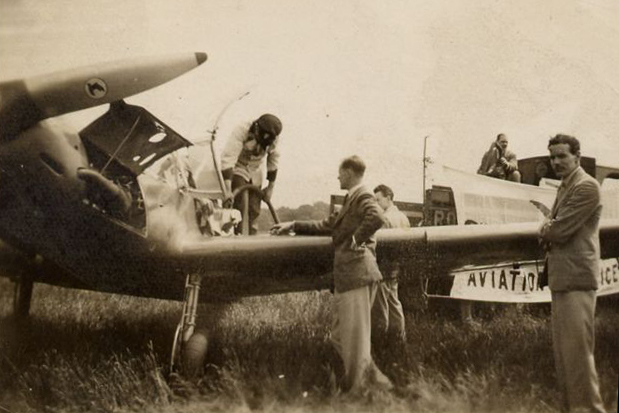
| The aircraft being refuelled is a Messerschmitt Bf.108. The participation of this aircraft caused quite a lot of interest and comment at the time. The type competed in the Isle of Man Air Race in both 1937 and 1938. |
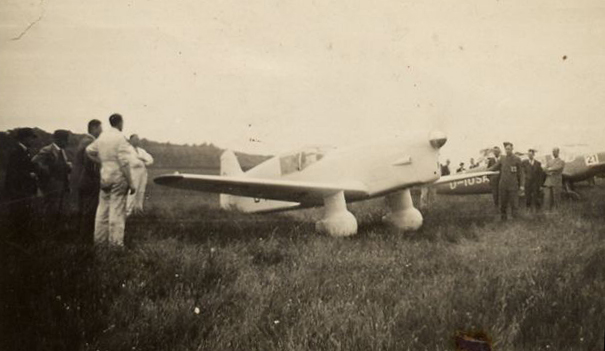
| 2. The single seat Percival Mew Gull was a popular air racing aircraft in the 1934-1939 period. Most famous pilot was Alex Henshaw, who participated in a Mew Gull in 1937, 1938 and 1939, this is likely his G-AEXF in 1937. Behind is Bf.108B D-IOSA with race code ‘21’ flown by Major Seidemann in the May 1937 Isle of Man Air Races and winner of the London to Isle of Man Race. |
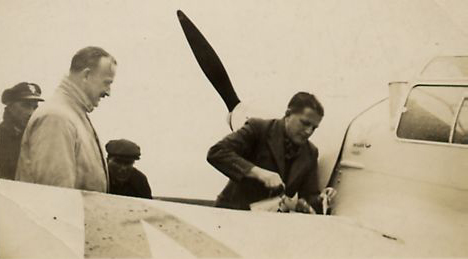
| 3. Likely a Miles Falcon Six being topped up with oil. Very possibly the one identified 10 photos further on, likely an IoM Air Race competitor. |
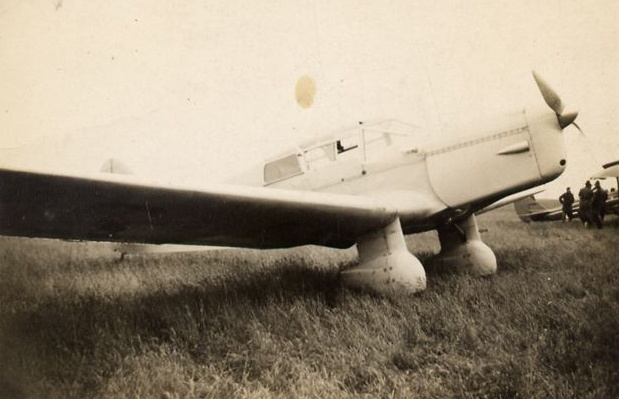
| 4. A Percival Vega Gull, likely an IoM Air Race contender. |
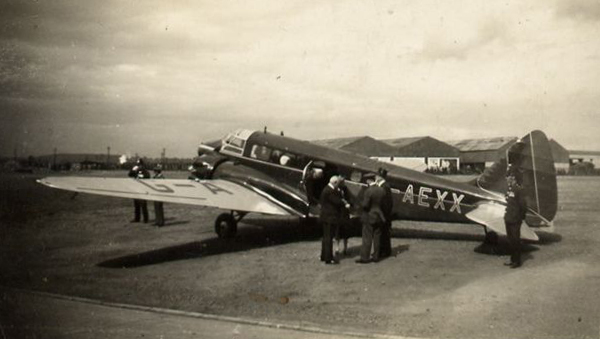
5. The distinctively maroon and blue painted Airspeed Envoy II, G-AEXX of the King’s Flight at Liverpool very likely in 1937. The sheds in the background are in the railway yards the other side of Speke Road and opposite the terminal and entrance, once built. |
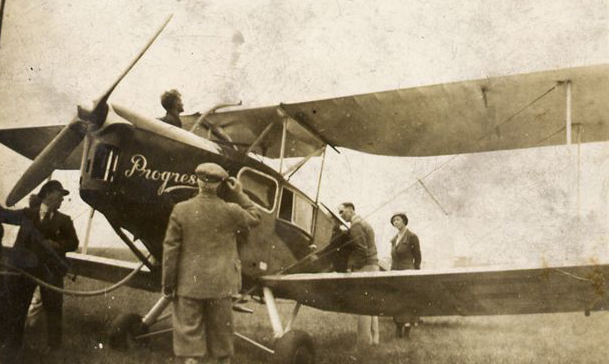
6. One of two de Havilland DH.83 Fox Moths (G-ACFC & G-ACFF) flown by Blackpool & West Coast Air Services in black and white colours. The ‘Progress’ logo reflects a link with a Blackpool coach company serving Lancashire and Yorkshire. |
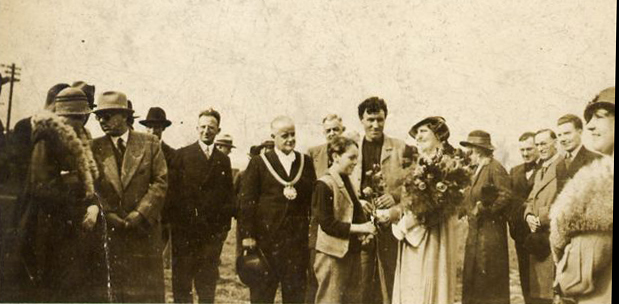
7. Record breaking and air racing pilots were the ‘A-listed’ celebrities of the time. But knowledge of who’s who has faded over the 80 years or so since the 1930s decade. |
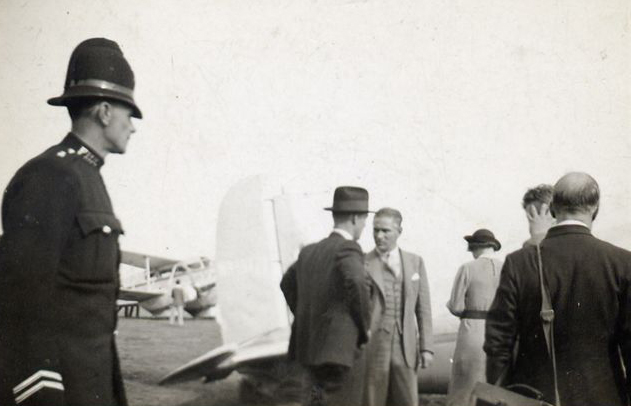
8. In the background of this September 1936 photo is a de Havilland DH.89 Dragon Rapide. Of greater interest, the aircraft tail, behind the people is Vultee V-1A “Lady Peace” (more on this aircraft, photo 4th from bottom), it is quite possible the gentleman in the light suit is pilot Dick Merrill. |
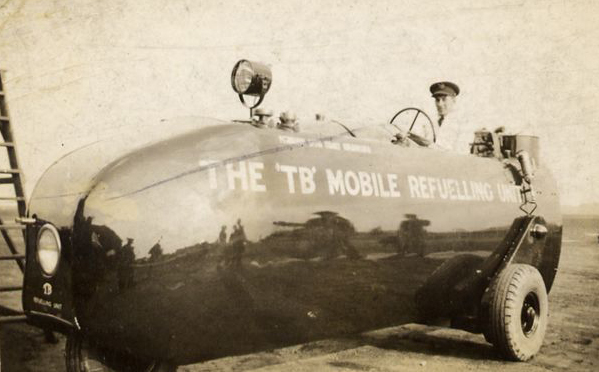
9. The three-wheeled Thompson Brothers’ petrol bowser was bought by Liverpool Corporation for use at the Airport in March 1936. From the fresh high gloss finish, the occasion in these two photos is presumably the Isle of Man Air Race, late May 1936. |

| 10. Second photo of TB mobile bowser, this one plus people |
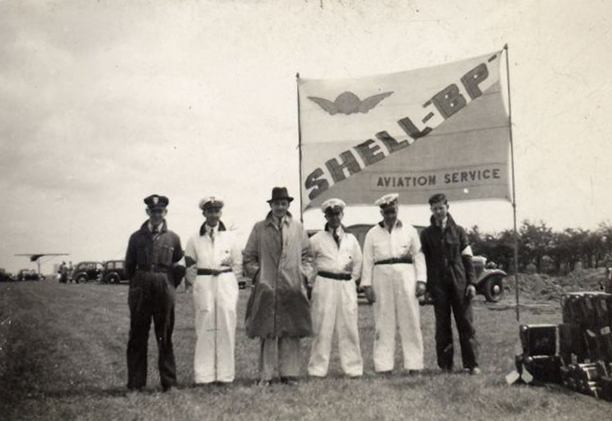
11. Shell-BP banner & people |
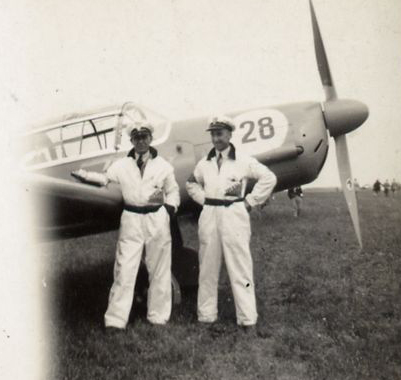
12. Messerschmitt Bf.108 D-ICIS with race code ‘28’ was one of three that competed in the Isle of Man Air Races in 1938. The Bf.108 was a two or four seat sports-tourer, built in Germany from 1934 and the direct precursor of Messerschmitt’s famous wartime Bf.109 fighter, with many design features in common. |

13. Speculation, I wonder if “white overalls, peaked cap” in both TB bowser shots and here, was the re-fueller (Mr McReady Snr) who collected and kept these photos? |
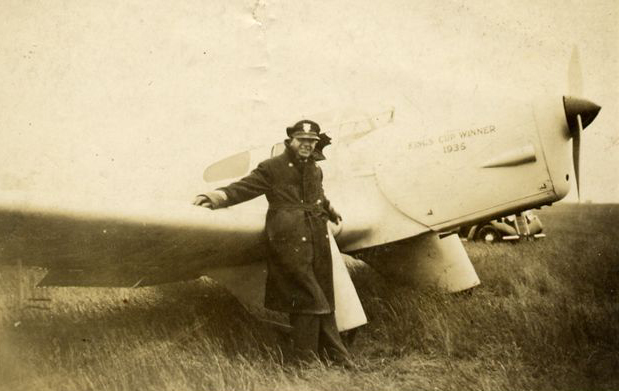
14. The legend ‘King’s Cup Winner 1935’ on the engine cowling, shows that this is the Miles M.3B Falcon Six, G-ADLC, flown to victory on 7th September 1935 by Tommy Rose at Hatfield. Tommy Rose flew this aircraft in the IoM Air Races, May 1936, however the guy casually posing is one of the Corporation ‘Airport hands’. |
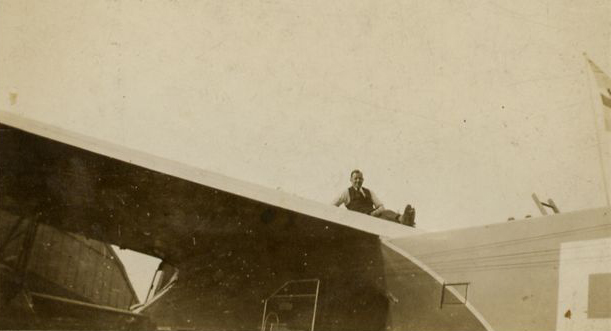
15. A K.L.M. Fokker F.XII outside Hangar 50, used by K.L.M., beside Chapel House Farm, which in the 1930s acted as watch office and terminal. |
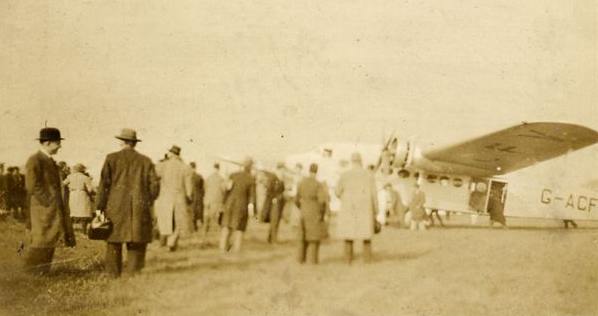
16. An 18 seat, Avro 642, G-ACFV of Midland and Scottish Air Ferries on scheduled passenger service, probably during 1934. |
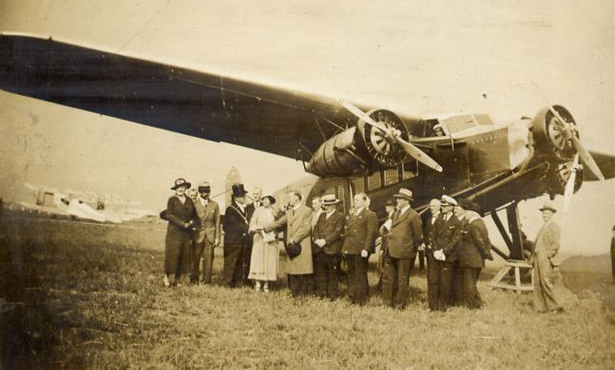
17. A three engine Fokker F.XII of KLM Royal Dutch Airlines, with a DH.83 Fox Moth, G-ACBZ, behind, which dates the photo to the period 1934-1936. |
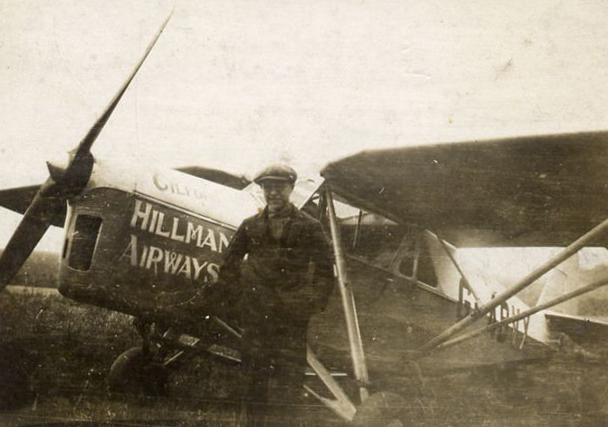
18. G-ABVX, a de Havilland DH.80A Puss Moth of Hillman Airways, most likely on a charter flight. Hillmans, in 1935 operated a mail flight London-Liverpool-Glasgow-Belfast, but used twin engine aircraft for this contract. |
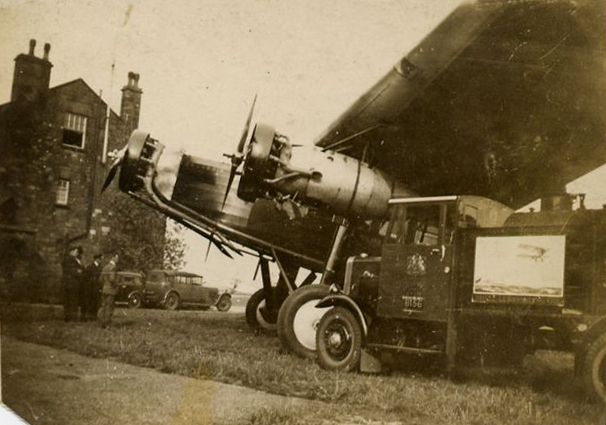
| 19. Another K.L.M. three engine Fokker F.XII parked outside the Chapel House farm buildings. |
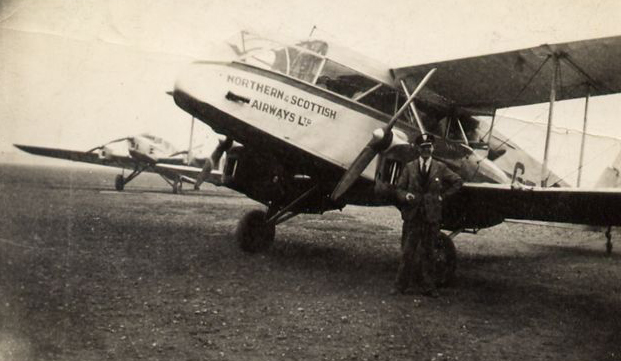
| 20. A DH.84 Dragon of Northern & Scottish Airways Ltd, most likely during 1935. A tri-motor Spartan Cruiser II behind. More on this aircraft 4 photos further down. |
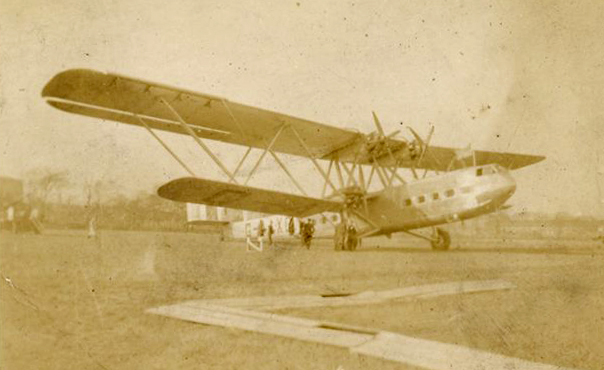
| 21. The giant, for its time, Handley Page HP.42 airliner of Imperial Airways, seating up to 28 passengers. There were only 8 built. In the early 1930s these were annual visitors, bringing in guests for the Grand National meet at Aintree. Very likely G-AAXC, in March 1933. |
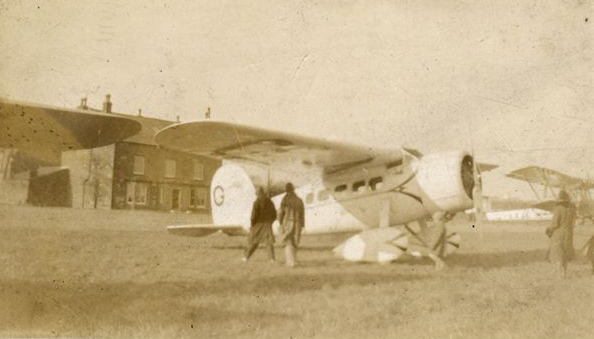
| 22. A really interesting one. The aircraft is G-ABGK a Lockheed DL-1A Vega seen outside Chapel House Farm on 24th March 1933, Grand National day, when it routed from & to its London base at Hanworth flown by Lt. Owen Cathcart-Jones. The aircraft was a long range, high wing monoplane and participated in a number of notable record setting flights, including London-Paris and London-Cape Town in 1931, and later participated in the 1934 Air Race to Australia. |
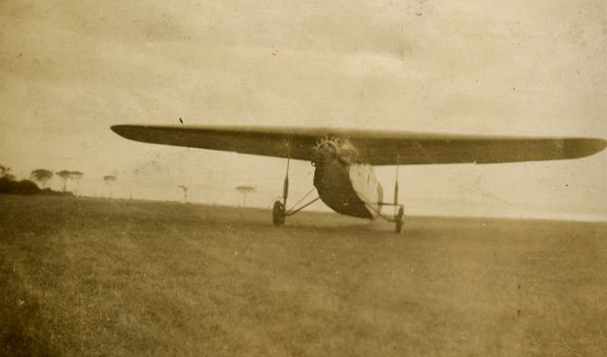
| 23. A single engine Fokker F.VIIa, most likely the Barnard’s Flying Circus’s, G-EBTS, which is known to have arrived on 30th June 1933 prior to taking part in the Airport’s Opening Air Display the following day. This 12 seat aircraft was involved a number of record breaking attempts in the late 20s. Note the family similarity to the three-engined Fokkers shown on other shots. |

| 24. One of just 12 Spartan Cruiser II tri-motor aircraft built. Operated into Liverpool by Northern & Scottish Airways and their associate United Airways in the period 1934-37, this shot likely in 1935. |
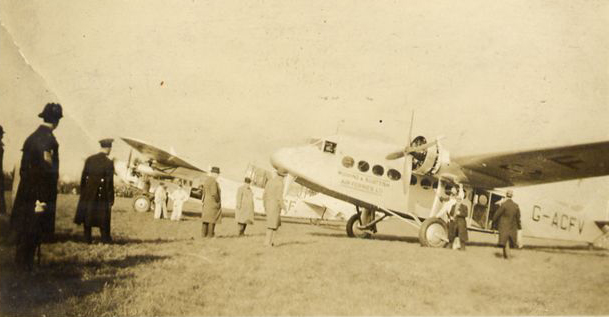
| 25. An interesting photo of an Avro 642, G-ACFV and Avro X (Ten) G-ACGF, both of Midland and Scottish Air Ferries, sometime in the period 1933-1934. The Avro X was a version of the Fokker F.VIIb/3m built under licence in Britain by A.V.Roe. |
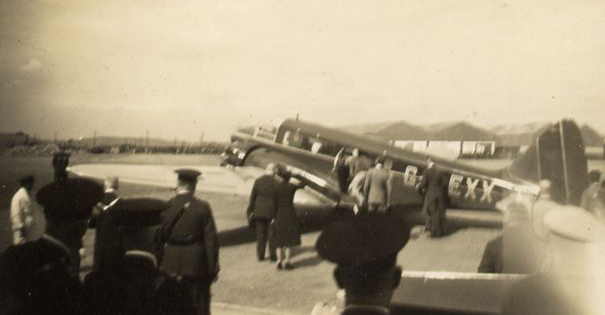
| 26. A further photo of King’s Flight Airspeed Envoy G-AEXX during 1937. |
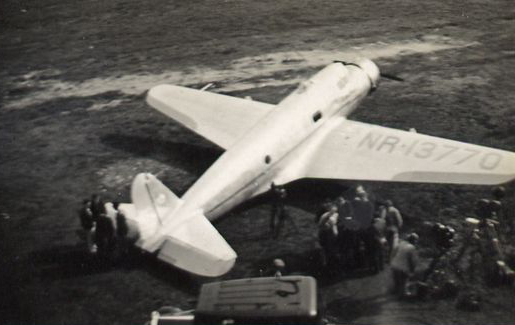
| 27. Another interesting record-breaker, “Lady Peace” a Vultee V-1A Monoplane, NR-13770, is known to have called at Speke in September 1936. Pilots Dick Merrill and Harry Richmond planned to pave the way toward commercial operations across the Atlantic with back-to-back crossings. All did not go as smoothly as planned though, with incidents and forced landings causing delays. On the home-bound flight, they routed Paris-Croydon-Liverpool. However as the runway at Speke was too short for a heavily fuel-laden take-off, the trans-Atlantic take-off was made from Birkdale Sands on September 14th, direct to Newfoundland. Note the cine-news cameras present in the foreground. In 1938 the Vultee aircraft in the photo was sold-on and became involved in the Spanish Civil War conflict, on both sides, indeed survived in Spain until 1952. |
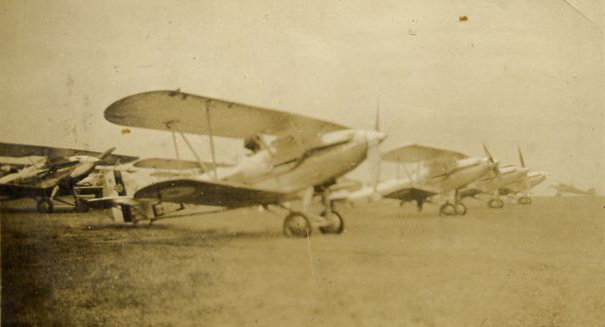
| 28. Line-up of Hawker Demon bi-planes of 23 Sqdn R.A.F. Seen here 1st July 1933, the occasion of the official opening of Liverpool Aerodrome. Given the thousands of spectators present, amateur photos of this event are rare. |
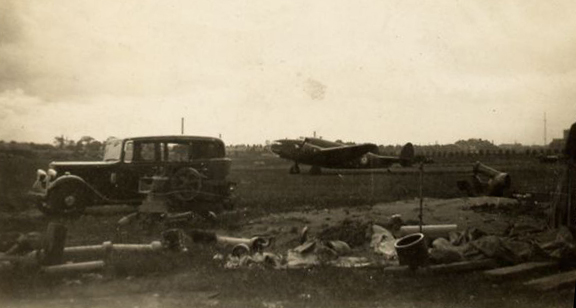
| 29 and 30 below. Lockheed Hudson aircraft at Speke, sometime from April 1939 onwards. The Lockheed Aircraft Corporation won a contract to supply 250 of these aircraft to the Royal Air Force, and selected Liverpool to assemble the aircraft, following import by sea, at a time before crossing the Atlantic by air was routine. The Hudsons here lack a gun turret, which was built and fitted in the UK. They were the first of many thousands of American aircraft to arrive by sea through Liverpool Docks to be readied for flight at Speke during the wartime years. |
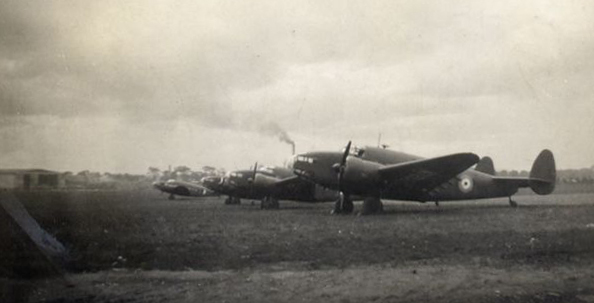
Liverpool Airport Website | Friends of Liverpool Airport | Wikipedia John Lennon Airport
Old
Pictures
|
B&W
Picture
Place | Chester
Virtual
Stroll
|
Site
Front
Door
|
Site
Index
| Contact us | Speke Airport 1 | 3 | 4